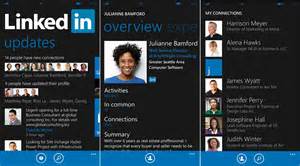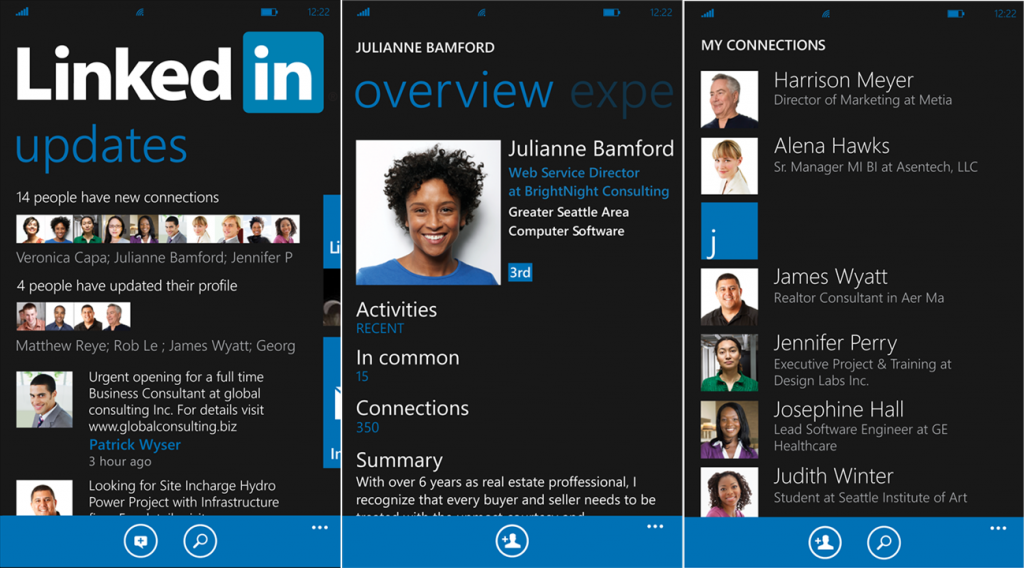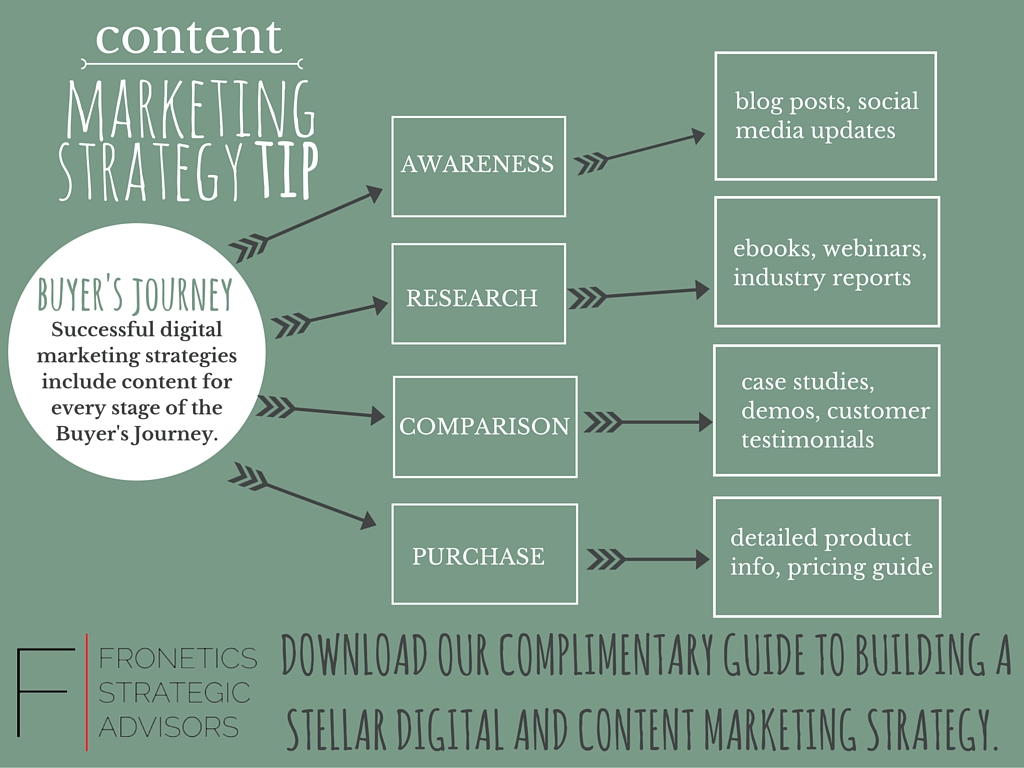
by Fronetics | Feb 24, 2016 | Blog, Content Marketing, Marketing, Strategy

Putting together digital marketing pieces in a way that fully meets regulatory requirements can grow your business exponentially.
There is a misconception that companies within a regulated industry are denied the benefit of digital marketing. These businesses often hide behind their regulations, simply because it is easier than working with them to create new avenues into the digital realm of marketing and company branding.
Is your marketing antiquated and stuck in the past? Could you be using regulations as an excuse to avoid change and stepping into the digital age? Are you really restricted from having an effective social media presence?
The facts say that you are not.
Regulated industries, such as those in the financial management realm, can be creating a very personal connection and presence with their customers, and therefore developing a competitive advantage. But, they must be willing to take the initiative to change how things are accomplished, to re-organize, and to create a cooperative strategy within their organization. Your mission, should you choose to accept it, is to tackle content marketing in a manner that fully upholds your regulatory standards.
It not only can be done, but the companies who successfully adjust can grow their businesses exponentially. In fact, other companies within your industry are probably already proving this to be true. A recent study indicated that that 77% of respondents from companies across industries planned to increase their digital marketing budgets in the coming year.
So, how does a business in a regulated industry — with restrictions on things like publishing, advertising, and even how interviews can be conducted — overcome these challenges and become a content marketing machine? How do you deal with the fact that every piece of content must be reviewed by an attorney or an outside compliance agency? How do you promote your business when there are even restrictions on customer testimonials?
First, marketing in today’s digital environment will require an overhaul of your strategic planning (aka, how you do things, and perhaps how you have always done things) and the release of any fear you have of digital marketing.
Creating an environment conducive to digital marketing
Here are a few tips to support this change:
- You must create a management environment where the swift development of rich content can thrive. In regulated industries, this probably means you need fast and effective access to an attorney, who can read and approve new content for public consumption within a couple of hours.
- You need to create a smooth, reciprocal interaction across these departments, with a focus on a more efficient operation and mutual support of the approval process.
- You need to invest financially in a solid strategic plan for your digital marketing. It takes money to make money, so to speak. Consider teaming up with a firm of talented individuals from outside your industry, who specialize in how to create digital content customized to your target demographic. This team should have the capability to analyze content performance metrics and to guide your digital presence to achieve optimal results. Their services should provide you a customized content plan, increase your customer engagement level, and develop a digital presence for your company that meets regulation standards for your industry.
- Your content writers and management team needs to be well-versed on the latest data and statistics, as well as your overall marketing initiatives, so they can produce content based on the latest facts and figures that will attract new customers. Essentially, they need to know what your new customers want and have the data available that will garner their attention.
Once you have paved the way, your company can begin to benefit from the creation of a blog, eBooks, and other digital presentations.
So how do you make it happen? How do you begin to access these modern marketing techniques in a regulated industry?
- First, your leadership team must be on board, ready to embrace change and to learn to communicate in new ways. If this is not something you can see happening because mindsets are stuck in the 1990s (pre-social media age), then you should educate stakeholders on how social media can impact a business’s growth and success.
- Redevelop the marketing department and provide the resources necessary to stay compliant and obtain necessary legal approvals quickly and efficiently.
- Befriend the legal department. They should be part of your support team, not a challenge you must overcome. Remove old paradigms and replace them with creative solutions, like an interactive spreadsheet shared between marketing and compliance to speed up the social posting process. Make marketing and compliance part of the same team, one that works together to seek solutions, alternatives, and compromises.
- Give it time. This is a big step in the right direction to align long-term strategies to better reach a new set of consumers. But it does not happen overnight. Plant the digital marketing seeds today and reap a crop of new customers tomorrow.
If you are in a regulated industry, the time to embrace change and step into the realm of digital marketing is now. Those who learn to evolve, to think creatively to find solutions, and to face new demands as a team are the ones that will rise to the top of their industry and experience a competitive advantage that supports future success.
Related articles:

by Fronetics | Feb 9, 2016 | Blog, Content Marketing, Leadership, Marketing, Strategy

Identifying content spokespeople outside of executive management can improve the product and alleviate C-suite stress.
Often people think they’re the only ones who can do their job or, at the very least, that they’re the ones who have been doing it and know it best. And some C-suite executives forget the people working around them — when, in fact, those are the very employees who could help them do their jobs better.
Joe Fuld, president of political and advocacy advertising agency The Campaign Workshop in Washington, D.C., has wise words on the subject: “As a business owner, I like to think that the business has a lot to do with me, but I have realized it has just as much to do with the people who work with me.”
Months ago I asked an account manager to be on a call with me to discuss an editorial calendar with a client. She was new to the account, so I thought it would be beneficial for her to listen in. A half-hour into the call, I saw her notepad with at least 20 new ideas for articles, white papers, and blog posts. By the end of the meeting, the list had grown to 40, and they weren’t just simple ideas — they were complex, thoughtful, and fresh. This wasn’t her role, but she dove in and helped to create the strongest editorial calendar to date. The client was pleased; I was thrilled.
The same experience can be true for a management team Strategically identified content spokespeople assisting senior management could help alleviate some of the stress C-suite executives face — and add new ideas to the pot.
Senior management are often extremely busy and may not be hearing the breadth of information and news that some of the lower-level professionals are exposed to. It’s true that too many cooks in the kitchen can spoil the meal, but, if chosen strategically, employees acting as content spokespeople could make your life easier and make the product better. Their investment and loyalty could also grow immensely.
John Hall, CEO of Influence & Co, writes about the subject in the Harvard Business Review. Here are his two suggestions on how to find the right people to fill the role of content spokespeople.
Identify content spokespeople
Identify employees who are comfortable teaching and demonstrate natural leadership qualities. The account manager mentioned earlier is the perfect example: engaging, patient, knowledgeable, curious, professional, trustworthy, and tactful. Her efforts always appear to be helpful, instead of boastful or misplaced.
Assess knowledge base
Hall suggests gathering and documenting information from content spokespeople. He does this by a Q&A process and brain dump exercises. He suggests keeping this information in a central location — a knowledge bank — for future use. From the knowledge bank content can be gathered and synthesized into an article or blog.
Hall says that the risk is minimal, since the C-suite can always have final editing power, so even if a content spokesperson says something off-color, the information won’t get out to the customers.
The involvement and collaboration in this process is incredibly valuable for everyone involved. Hall claims, “By embracing the unique experiences of your employees outside the C-suite and showcasing their diversity through thought leadership content, you’re strengthening your brand’s authentic, human connection to your audience.”
Related posts:

by Fronetics | Jan 26, 2016 | Blog
Employees are much more than people you employ — they can be your best brand ambassadors.
 A friend shared a story recently. He was chatting with a woman at a party years ago. While they were exchanging pleasantries and engaging in small talk, he asked where she worked. She told him that she worked for a certain bank, which happened to be his bank. He felt valued by the company and loyal to it, as it was where he opened his very first bank account when he was just starting college. When he cheerily told her that he was a customer, she promptly and dryly responded, “Oh, have we ripped you off yet?”
A friend shared a story recently. He was chatting with a woman at a party years ago. While they were exchanging pleasantries and engaging in small talk, he asked where she worked. She told him that she worked for a certain bank, which happened to be his bank. He felt valued by the company and loyal to it, as it was where he opened his very first bank account when he was just starting college. When he cheerily told her that he was a customer, she promptly and dryly responded, “Oh, have we ripped you off yet?”
Soon after he changed banks.
Some companies are overlooking their greatest marketing tool: their employees. That woman made a big impression on my friend and actually effected change. Though not the ideal outcome and desired action that the bank would have wanted, it illustrates an interesting point. According to the 2013 Edelman Trust Barometer, “employees rank higher in public trust than a firm’s PR department, CEO, or founder. 41% of us believe that employees are the most credible source of information regarding their business.”
Employee influence is huge. They can be, in fact, your most influential brand ambassadors.
The hope is, of course, that employees share the positive aspects of the business and become vocal champions, providing current and potential customers an interesting perspective that can’t be found in traditional ads and other marketing tools. Employees as assets, not people who punch in, work, and punch out. They can represent and reflect the best aspects of a company.
How can companies introduce and integrate this concept of brand ambassadors into their practices?
Communication
To grow a culture of brand ambassadors, it’s critical to communicate your vision, repeatedly, to your employees, your consumers, and the general public. It’s no longer a question of whether employees will share their experiences about working at your company, but rather whether they’re saying the things you’d prefer them to say.
By companies posting positive stories on Facebook and Twitter, employees can then share those inspiring posts in their own circles. One “I love working here!” post can deeply influence potential consumers. It may be the best marketing power out there.
When a company has a mishap, it’s easy fodder for conversation, but it won’t be the focus of loyal employees, who can redirect the attention to something more positive.
Choose a leader
Choose an employee who can act as a community organizer amongst peers. The leader should be: well-liked, diplomatic, encouraging, responsible, collaborative, and reliable. This is not someone who is demanding and barks orders, but someone who understands the nuances (think: your go-to star who possesses tact and grace).
The leader has many roles, least of which is a guide and role model. She can coach others on best practices and responsible strategies, suggest and review social media content, brainstorm new storylines to promote the company’s message. Sometimes, a simple reminder to update LinkedIn or suggestion to write an article about a positive aspect of the business can get the ball rolling and create regular posting habits.
Remember that the people who work for you are much more than hired help, much more than people you employ. They’re talent. Allow them the opportunity to stretch and use their talent to showcase your brand in new ways. Brand ambassador is not a bad title!

by Fronetics | Jan 21, 2016 | Blog, Marketing, Social Media
The LinkedIn Mobile App can help you grow your marketing program from the comfort of your phone.

Increasingly people are on the move, and smart phones are on the rise. In 2015, 64% of adults had a smartphone, up from 35% in 2011. Worldwide there are 3.7 billion unique mobile users. Those numbers are growing rapidly.
With the rise of mobile access and technology, people use phones in many of the same ways they use computers. You can scan, email, write, research, talk, bank, and — thanks to the LinkedIn Mobile App — apply for jobs, post articles, communicate, and engage with peers.
LinkedIn believes the app is “a faster way to tap into your professional world. Get news and info that matter for your professional day, a daily brief on what’s happening in your network, and a quick way to reach out and keep in touch.” Sounds good for those of us who rely heavily and increasingly on our phones.
Here are some ways in which you should be using the LinkedIn Mobile App to help your marketing efforts:
1. Update
A cornerstone of inbound marketing, writing updates and engaging daily (or hourly) with connections is important. Within an update you can include text, links, and photos and mention other LinkedIn members. You can also choose to share your update with your entire LinkedIn network and/or first-degree connections and/or your Twitter feed.
2. See who’s looking
Discover who has viewed, liked, or commented on your profile and content. The app lets you reply directly if you’d like.
3. Engage
Keep up with your network by finding, commenting, liking, and sharing. Repeatedly, we hear of the importance of engaging with connections and truly trying to value their posts, especially before sharing your own agenda.
4. Edit your profile
Notice a mistake on your company profile? Make an immediate change, even without your computer. Maybe you’re at a business meeting or out to dinner, and you notice that something hasn’t been updated on your company profile. You can fix it immediately.
5. Send & receive messages
This is a staple, and one that is critical. Again, if you’re at a business meeting, at a conference, or just without your computer and you need quick access to someone who you don’t have in your smartphone address book, you can find them and contact them through the LinkedIn Mobile App.
You can also access Lynda.com to watch tutorials and get training, get daily updates from LinkedIn Pulse, use LinkedIn Lookup to find connections, and use LinkedIn SlideShare to access over 18 million tutorials, infographics, and professionals.
There’s no need to cease connecting or marketing when you’re without your computer. The newly updated LinkedIn Mobile App can help you get the job done efficiently.
![How to create an effective content strategy [Template]](https://www.fronetics.com/wp-content/uploads/2024/10/content-strategy-1024x675.jpg)
by Fronetics | Oct 26, 2015 | Blog, Content Marketing, Marketing, Strategy
With 3 out of 4 marketers across the globe prioritizing content marketing, producing unique content to attract and convert website visitors can be tough. From social media to blog posts to ebooks and webinars, buyers are accessing your content through a myriad of channels. The amount and frequency of content to create can be dizzying. Fortunately, by starting with a solid strategy you can assure your content flows freely and your marketing content stands out.
One key element of any successful content strategy is mapping your buyer’s journey. Considering the path of purchase of current customers can give you valuable insight into the stages that a lead goes through before becoming a customer. Typically, buyers follow a track that looks something like this: awareness, research, consideration, and purchase. Knowing your buyer’s journey can inform your decisions about what kinds of content will resonate with your prospects and which channels of distribution will be most successful connecting them to your content.

Of course, just mapping out your Buyer’s Journey won’t lead to content marketing success. It’s certainly important, but it should be one component in your overall strategy. Start building a comprehensive content strategy that includes goal setting, developing buyer personas, setting keywords, and brainstorming content topics by using our free Content Strategy Template. You’ll be well on your way to creating great content and attracting even better leads.

You may also like:
Fronetics Strategic Advisors is a leading management consulting firm. Our firm works with companies to identify and execute strategies for growth and value creation.
We advise and work with companies on their most critical issues and opportunities: strategy, marketing, organization, talent acquisition, performance management, and M&A support.






![How to create an effective content strategy [Template]](https://www.fronetics.com/wp-content/uploads/2024/10/content-strategy-1024x675.jpg)

